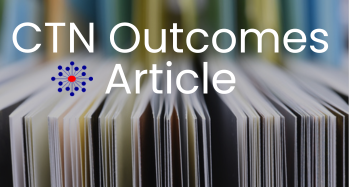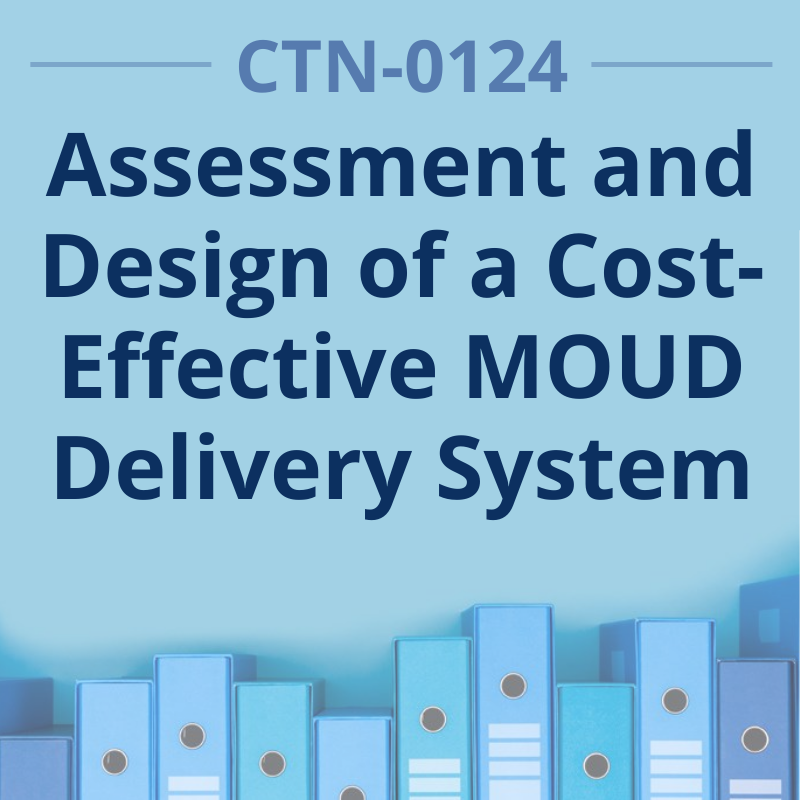
Primary Outcomes Paper for CTN-0124: Delivering MOUD to the Underserved: How Can Pharmacies Really Help?

The primary outcomes paper for CTN-0124, Assessment and Design of a Cost-Effective Collaborative MOUD Delivery System, is now available!
Citation: Gustafson DH, Molfenter T, Kunes T, Langdon L, Koplin M, Parker F, Branny K, Ghitza U, Bart G. Delivering MOUD to the Underserved: How Can Pharmacies Really Help? Journal of Studies on Alcohol and Drugs 2024 (in press).
What’s the question?
Access to treatment for opioid use disorder (OUD) is a challenge in rural settings and for communities of color, partly because of the limited availability of healthcare providers equipped and willing to provide medications for OUD (MOUD). Pharmacies have been increasingly proposed as one way to enhance access to MOUD, as they are often more available in rural and other underserved communities than primary care physicians or other prescribers.
A key question, however, is whether or not pharmacies are adequately prepared to distribute medications and other resources to people with OUD. This study aimed to answer that question by examining the potential role of pharmacies in MOUD delivery, looking at what barriers exist, and proposing actionable strategies for improvement.
How was this study conducted?
To address this issue, the CTN-0124 study team developed a 9-month engineering systems analysis, a problem-solving approach that breaks a system into its individual parts, analyzes how well those parts work together to accomplish their purpose, and creates an aspirational design for the future.
To perform this analysis, the study team, made up of 5 systems analysis (3 from health care and 2 from industrial risk management and compliance), as well as experts in pharmacy systems and law, worked together with a regional chain of over 70 independent pharmacies serving rural and underserved communities in Wisconsin and Michigan and assessed MOUD distribution processes, regulation, staffing, data systems, training, and reimbursement. They also interviewed 43 subject matter experts (community pharmacists, members of pharmacy associations, and addiction experts). Finally, they looked for opportunities for process improvement and potential elements for a next-phase project.
What did the study team find out?
When the project began, the study team believed pharmacy roles related to MOUD distribution could significantly expand. After the study, however, the team now believes that while this may be possible in large population centers, dramatic expansion in rural and underserved areas will be impractical without significant systemic change.
In order for pharmacies to take a greater role in MOUD access, the study team says, they need to take advantage of a range of technological innovations to try to overcome the myriad barriers they and their staff would face. The team’s specific recommendations, presented in the paper, are based on 9 themes that came up in their analysis: 1) mindset and stigma, 2) simplified and powerful PDMPs (prescription drug monitoring programs), 3) innovations in technology, 4) work simplification, 5) family education and support, 6) integration with other health providers, 7) regulatory reform, 8) reimbursement, and 9) integrated demonstration.
What are the implications of this study?
The findings of this system analysis reveal plenty of potential for pharmacies to play a significant role in expanding access to MOUD in underserved communities, however, this expansion will be more complicated than originally expected. Significant systemic changes will be necessary, and challenges like thin profit margins, staff shortages and burn-out, and the stigma surrounding addiction and mental health disorders are all major barriers to widespread adoption.
In light of these findings, the conversation may need to change to one more focused on the crucial role of regulatory, reimbursement, workflow, and technological innovations needed to support pharmacies and their staff in this new role and help them overcome these barriers and challenges.
Want to read the article? Find it in the CTN Dissemination Library!